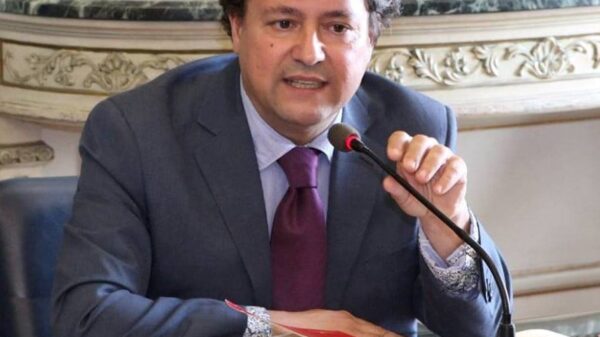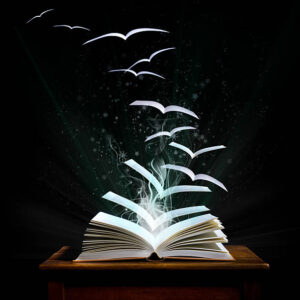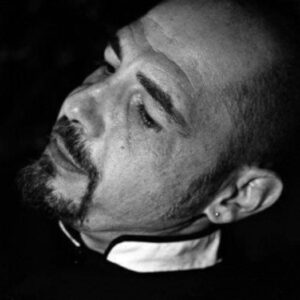


The Impassable Horizon:
The Surrounding View
by Angelo Fàvaro
Translation by Clea Rivalta
University of Warwick (UK)

The gaze is tempted by the horizon; the horizon invites the gaze to go beyond what is known and to glimpse what lies beyond, by moving toward the unknown. In doing so, the mind loses its memory; it becomes distracted, it wanders, imagines, speculates, and builds axioms. Yet eventually, something or someone recalls it, or summons its presence—we turn our eyes back to what surrounds us, and we perceive the extent and the limits necessary to consider presence in its full scope.
Everyone has a natural point of observation, shaped by place and condition—spiritual, human, cultural, social—from which they observe. To comprehend the Other within the extension of horizon and scope, and to be comprehended by Others, is the ancient miracle of human sharing across the world and through languages. As the grammarian Festo illustrated in ‘De verborum significatione’, “Mundus appellatur caelum, terra, mare et aer”: The world is called heaven, earth, sea, and air.
Largo Sguardo is a desire, a project, a wish to share the discomfort and self-awareness of the globalised human being—one who seeks to connect Earth, Italy, and Europe with the world through poetry. Italy is a nation-state, one of the founding members of the contemporary European Union. The latter is the result of a long, obstacle-strewn journey that began at the end of World War II and was marked by the signing of the Treaty establishing a Constitution for Europe by the representatives of the member states on the 29th of October 2004, in Rome.
We should avoid confusing the political and economic path with the cultural, historical, and literary journey of the idea of Europe—an idea much older and less often described. Understanding what the EU lacks and what it needs today—culturally and spiritually—requires integrating these perspectives through a constant process of legitimisation and an understanding of what it means to be a European citizen, and therefore, a citizen of the world. The European Union is the product of centuries of dialogue, of shared values, discoveries, and scientific and cultural progress. To continue evolving, the EU must acknowledge and recognise its roots—its past.
By focusing on the story of the idea of Europe, we can trace its origins through documents and sources. We would find ourselves at the threshold of Western civilization, where many surprises await—where the idea of Europe is expressed and codified, clearly and indelibly, in culture, literature, and the arts. In poetry.
Is there such a thing as a European man?
Denis de Rougemont, the well-known Swiss intellectual who founded the Centre Européen de la Culture in Geneva, in his work The Idea of Europe, combined the historical-cultural facets of Europe with the demands of political federalism as a tool for unification. According to him, the European man is the dialectical man par excellence, full of contradictions.
At the beginning, there was the myth: the nymph Europa.
If we accept that myths can explain our origins and offer shared identity, then the myth of Europa is an extraordinary allegory for our condition. The mythical daughter of Agenor never reached the centre of our continent; she stopped in Crete. Zeus, who fell in love with her, transformed himself into a white bull, abducted her, and carried her across the sea to Crete. There, he regained his human form, they lay together, and their union produced three children: Minos, Rhadamanthus, and Sarpedon.
Europa was hardly “European” in the geographical sense, yet she was loved by the god of Light and Justice, who became a bull—a symbol of power—and together they generated Minos, the mythical king who rid the Mediterranean of pirates, founded trade routes, and became known for administering justice among the dead in Book XI of the Odyssey. He is also mentioned in Dante’s Inferno. Rhadamanthus is the lawgiver par excellence, a supernatural judge. Sarpedon, the warrior—just, fearless—represents justice and strength in war.
Read allegorically, the myth gives us:
Zeus as Light and Justice,
Europa as wandering beauty,
Their offspring as Right and Justice, Legislative Practice, and War—three main traits of Western identity and politics.
Hesiod’s myth of Europe is not confined to one region or continent, but instead offers an allegorical synthesis of the most defining aspects of the globalised West.
From a linguistic and etymological standpoint, the word Europe does not originate in Europe. It derives from the Semitic-Phoenician sailors who traveled westward, with Europe meaning “sunset” or ponente. The daughter of Agenor was born in Phoenicia—modern-day Lebanon. Thus, Europe has Semitic roots and in Greek comes from the root √ereb, Erebus, meaning “west,” the place of occaso—where everything “always dies.” The West: the “ever-dying.”
What a paradox—that the place where all things perish is also the birthplace of new beginnings, of great ideas, including that of a united Europe.
The concrete notion of Europe began to take shape during the Persian Wars and with Alexander the Great’s ambitions. Herodotus, in Histories Book I, chapter 4, notes that Persians viewed Asia as their homeland and Europe as a separate world. In Book IV.36.2, he describes the difficulty in delineating Europe’s boundaries, or even knowing its name’s origin.
The rhetorician Isocrates, in his Encomium to Helen (380 BC), claimed that thanks to Helen’s abduction and the Trojan War, Europe triumphed over Asia for the first time. Many cities and territories were taken from Asia. Europe thus came into being in contrast to Asia—a continent with clear borders and centralized authority, whereas Europe lacked both.
In Roman times, the myth or concept of Europe appears less frequently, though Marcus Terentius Varro, in On the Latin Language (Book V, 31–32), notes Europe’s variety of peoples as its distinguishing feature. Still, the Roman res publica created a unity—political, cultural, and economic—that formed the core of the Western world’s heritage. Reading the Aeneid, Horace’s Odes, Strabo’s Geography, and Pliny’s Natural History, Europe is presented not as a fixed geography, but as the sphere of influence of those who subdued the known world.
In the Middle Ages, Europe—once a myth, once the Roman Empire—took on a specific identity as the three monotheistic religions collided. The first use of Europe in the medieval sense appears in the Chronicon of the Battle of Poitiers (732), where Charles Martel defeated the Arabs. From then on, Europe was equated with Christianity—especially that consolidated by the Frankish dynasty and later by Charlemagne in the Holy Roman Empire.
The first significant projects of a unified Europe as a political idea emerged in the early 14th century. Despite two world wars, the journey from then to now has been surprisingly short.
This preface aims not to provide a historical-literary survey, but to introduce a new mode of European literary expression—from a critical-creative perspective. Not just comparative, but a form of literary and poetic creation that transcends national borders to become naturally, originally European—capable of expressing a European imagination grounded in the particularities of each nation.
Comparative literature studies address the relationships and differences among traditions: production, reception, communication, genres, rhetoric, styles, local and supranational contexts—including intercultural, multicultural, and gender studies. Largo Sguardo seeks to go beyond these boundaries. It offers a poetic experiment never attempted before: twenty-three European languages engage with three poetic texts by Stefano Amorese (alias Faraòn Meteosès): ‘Sidol, Specchiatura, Automotrice a voce per inchiostri acustici.’
Beyond language translation—an act of creation in itself—are intersemiotic trans-codifications: from poetry to the seventh art (film). We could define Largo Sguardo as a trans-semiotic poetic translation. Texts, places, sounds, rhythms, and landscapes are reimagined by translators and video artists. Combined with multilingual readings, the music and imagery produce a haunting, collective European masterpiece.
These images, sounds, and words transcend borders, engaging in dialogue that only poetry can foster—miraculously—by recognizing, not erasing, cultural, political, and psychological differences. Translation transforms literature from one language, experience, and worldview into another. Borders dissolve through love for difference and metamorphosis.
Largo Sguardo teaches us impermanence and flexibility.
We are part of a culture that must dialogue with others. A Europe with many souls symbolizes our constant need to engage in dialogue—with the self, with the Other, and with the familiar-yet-foreign landscape.
The texts become images; the images, sounds; the sounds, emotions. Where does Europe end? Where does it begin? A continent between Asia and America, looking to the North Pole and Africa, and radiating the Self beyond itself.
Every artist—translator, filmmaker, musician—has challenged the natural, linguistic, and cultural boundaries to create a transnational work. Largo Sguardo is not a book in the usual sense. It demands complete immersion. It becomes a hymn to diversity, an elegy to dialogue—imbued with a Promethean force that transcends every barrier.
Voltaire imagined a cosmopolitan literary Europe in The Age of Louis XVI. We must thank poetry, for it lets us feel life’s rhythm—the movement between presence and absence, self and other. Through this gratitude, poetry becomes the ideal vehicle to express the incomplete project of European identity and otherness.
The verse of Largo Sguardo moves unpredictably, across paths both various and variable. Its unstable rhythm reflects real human experiences, values, and hopes. We ask poetry to respond, to approach us with its many melodies, shaped by poetic words in many languages.
When approached with the idea of the One and the Many, poetry becomes a multi-verse. The EU does not yet guarantee identity and multiplicity—it is still defining itself. Largo Sguardo, with its deeply European poetry, helps us reflect on our shared and diverse histories and emotions.
Hermes made the lyre from a turtle shell, strung with ox gut—an inner thing made to express outer music. The lyre, sacred to Apollo, resonates with the grace and wisdom of the Muses. It continues to teach European poets how to sing of the fracture between God and man, life and death—in a dance of faith and doubt, betrayal and kinship. Not conflict, but dialogue: between being and not being, becoming and remaining, union and separation.
All of these guide us toward a true awareness of European civilization.
Tony Harrison, in The Gaze of the Gorgon, reflects on Europe’s citizens. He insists poetry is still possible—even after Auschwitz, the Gulf Wars, and dictatorships—by starting again, with Europe, its citizens, its poets.
It is between the poles of localism and cosmopolitanism that today’s creative challenge lies. After, beyond, and among us—it is, in unexpected ways, the paradox of Poetry that forever invites us to take a largo sguardo—a broad gaze.



